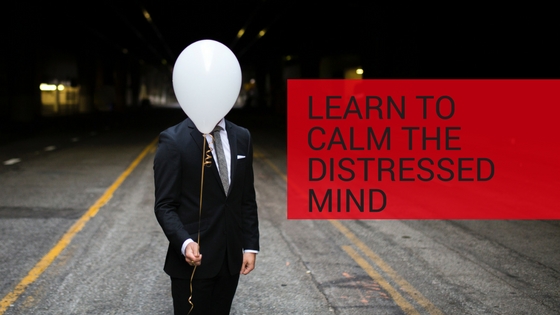A common theme I’ve been hearing in my mindfulness sessions, social media, email and in person is this: we’re experiencing unpresented overwhelm. Most of us are constantly bombarded with 24/7 input of information, from work, family, friends, social media, email, text messages and so on. Even though I teach mindfulness and meditation, I, too, have been noticing mental distress and mental fatigue.
Whenever I get pushed off of homeostasis, it’s a reminder for me to pause and pay attention. Rather than noticing your distressed mind and immediately going into judging or suppression mode, see if you can approach it with curiosity. What are the trigger points? What are you doing to practice self-care? What is behind the feelings of distress?
Over the years, I’ve collected a toolbox full of simple techniques that is helpful for soothing the distressed mind. I invite you to actually try these techniques—over days or weeks—rather than simply read through the list. Like physical exercise, it won’t do any good to watch someone demonstrate it. You must practice it.
Relax Your Breathing
Simple advice such as “just breathe” can feel irritating, especially when your mind is in full panic mode. It feels dismissive, as if breathing can solve all the world’s problems. However, you intuitively know that when you’re under a high amount of stress, experiencing anxiety or in full panic mode, this leads to bad decision making.
Take just a few minutes to pay attention to your breath—how you’re breathing can ease the mind and defuse the body’s natural fight-or-flight response.
It can be difficult to engage in slow, diaphragmatic breathing, especially when you’re experiencing strong emotions. I have found this very simple video to be extremely helpful. It offers a great visual cue to look at and follow.
Meditate
In my mindfulness workshops, I teach lawyers to meditate in 0.1 hour increments. Research indicates that lawyers are a stressed-out bunch. What’s surprising is I’ll survey the room and ask Do you feel less stressed? after the guided meditation, and majority of the room raises its hands.
The most powerful proof that meditation can reduce stress and anxiety is to experience it for yourself. You don’t need to meditate for hours in order to experience the many benefits. Even a short meditation, such as this guided meditation for when you’re having a bad day, can make a difference.
A few tips to keep in mind:
- There’s no perfect or right meditation. Meditation is all about meeting yourself, exactly as you are without judgement. Bring a sense of playfulness and curiosity to your practice.
- Be gentle with yourself. When we sit quietly, it can force a lot of feelings, unprocessed issues and thoughts to the surface. See if you can offer the same kindness you would extend to someone you care about deeply.
- There’s no perfect or ideal time for meditation. Pay attention to the excuses your mind may cling to. For example, I can’t meditate now because there’s too much background noise or I can’t meditate because the kids might walk in, etc. Can you meditate despite the distractions?
Connect With Your Happy
We can get so caught up in the nonstop bombardment from news and other distractions that we lose touch with simple activities that make us feel happy and joyful. I encourage you to pay attention! When do you feel good (and when do you feel bad)?
Some ideas:
- Hug someone that loves you. Research suggests hugs may boost your immune system and reduce stress.
- Listen to your favorite song. According to the American Psychological Association, listening to songs or better yet, singing a song may have therapeutic benefits. My go-to happy songs are “Everything is Awesome” and Sting’s “Desert Rose.”
- Move your body, change your mind. You already know this but worth reminding. When you’re stuck in a funk, move your body. Can’t get to the gym or outside? Give this yoga at your desk a try (6 minutes)

